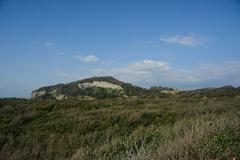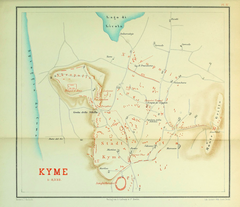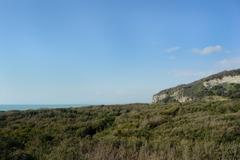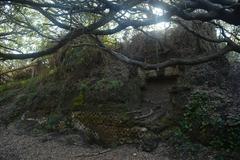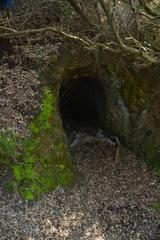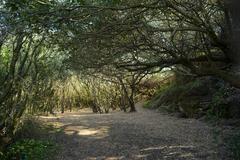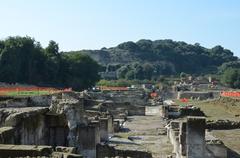
Cumae Visiting Hours, Tickets, and Historical Sites Guide in Pozzuoli, Italy
Date: 14/06/2025
Introduction
Cumae, located just west of Naples in the evocative Phlegraean Fields, stands as the oldest Greek colony on the Italian mainland and a pivotal site in Mediterranean history. Founded around 750 BCE by settlers from Chalcis, Cumae was instrumental in the dissemination of Hellenic culture throughout Italy, marking the inception of Magna Graecia. Its strategic coastal position enabled it to flourish both economically and culturally. Today, the archaeological park preserves a fascinating array of ruins that bear witness to the Greek, Etruscan, Samnite, and Roman civilizations that have shaped Cumae’s enduring legacy.
A visit to Cumae allows travelers to immerse themselves in legendary sites such as the Temple of Apollo, the Acropolis with panoramic vistas over the Bay of Naples, and the mysterious Cave of the Cumaean Sibyl—immortalized in Virgil’s Aeneid. With accessible pathways, guided tours, and proximity to other remarkable attractions like the Solfatara volcano and Lake Avernus, Cumae offers an ideal blend of history, mythology, and natural beauty (Britannica; Tartaruga in Viaggio; ReidsItaly).
This complete guide provides up-to-date information on visiting hours, ticketing, transportation, site highlights, nearby attractions, accommodations, and practical tips to ensure a rewarding visit.
Table of Contents
- Introduction
- Historical Overview
- Archaeological Highlights
- Visiting Information
- Nearby Attractions
- Accommodation and Dining
- Practical Tips and FAQs
- Conclusion
- References
Historical Overview
Foundation and Early Greek Influence
Cumae was established around 750 BCE by Greek settlers from Chalcis in Euboea, becoming the first major Greek colony on mainland Italy. Its prime position allowed control over the Campanian plain and fostered the spread of Greek language, religion, and urban culture. The early city prospered, as seen in its monumental temples and coinage. Notably, the Temple of Apollo—dating to the 6th century BCE—functioned as a religious and civic hub (Britannica; Tartaruga in Viaggio).
The Cumaean Sibyl and Mythological Legacy
Cumae’s most celebrated figure is the Cumaean Sibyl, a legendary prophetess who, according to ancient sources, resided in a cave overlooking the sea. Her prophecies, especially the Sibylline Books commissioned by Augustus, became central to Roman religious and political life. The Sibyl’s Cave remains a focal point for visitors seeking to connect with classical mythology (Tartaruga in Viaggio).
Etruscan and Samnite Conquests
The city’s prominence attracted the attention of powerful neighbors. In the 6th and 5th centuries BCE, Cumae resisted multiple Etruscan assaults before falling to the Samnites in the 5th century BCE. This conquest led to a gradual replacement of Greek with Oscan and later Latin, though Greek traditions endured in religious practice and city planning (Britannica).
Roman Era: Integration and Transformation
Cumae was incorporated into the Roman Republic in 338 BCE, ushering in an era of public building and urban expansion. The Romans constructed a theater, forum, and baths, blending local traditions with Roman culture. Over time, the city declined, ultimately being destroyed in the early 13th century, but its multi-layered ruins preserve the intertwined histories of the region’s ancient peoples (Tartaruga in Viaggio).
Archaeological Highlights
Acropolis and Temples
- Acropolis: The fortified acropolis is the heart of ancient Cumae, offering spectacular views and showcasing defensive walls built from the 8th century BCE onward. It also houses temple foundations and traces of early city planning (Britannica).
- Temple of Apollo: Situated on the acropolis, this temple was originally built in the 6th century BCE and later adapted for Christian worship. Its remains highlight the evolution of Greek to Roman, then Christian, architecture.
- Temple of Jupiter: Though less well preserved, this temple signifies the city’s religious diversity and the transition from Greek to Roman deities.
Sibyl’s Cave
The legendary trapezoidal tunnel, carved into tufa rock, is famously associated with the Sibyl of Cumae. The cave’s atmospheric chambers, mentioned in the Aeneid, captivate visitors with their mythological resonance and unique architecture (Tartaruga in Viaggio).
Necropolis and Lower City
- Roman Baths and Forum: The lower city, expanded during the Roman era, contains the forum and baths, with sophisticated heating systems and remnants of commercial life.
- Necropoleis: Surrounding burial grounds feature rock-cut tombs and frescoes from the Greek, Samnite, and Roman periods.
Arco Felice
This monumental arch, built under Emperor Domitian in 95 CE, forms a dramatic gateway through Monte Grillo, linking Cumae to the Via Domitiana and underscoring its importance within the Roman road network.
Visiting Information
Opening Hours and Tickets
- Hours: The Archaeological Park of Cumae is open Tuesday to Sunday, typically from 9:00 AM to 7:00 PM, with last entry one hour before closing. Winter hours may be shorter; always check the official website for updates (Tickitaly; Around Naples).
- Tickets: Standard entry is €5–10 for adults, with reduced rates for EU citizens aged 18–25 and free admission for children under 18. Multi-site passes (Circuito Flegreo) and Campania Artecard options are available (CoopCulture; Movery). Purchase tickets at the entrance or in advance online.
Accessibility, Facilities, and Guided Tours
- Accessibility: Main paths are improved but remain uneven and steep in places, especially around the acropolis. Wheelchair access is possible in select areas; contact staff for assistance.
- Facilities: Restrooms are available near the entrance; shade is limited, so bring sun protection.
- Guided Tours: Expert-led tours and audio guides are highly recommended for historical context. Check availability at the entrance or book ahead via local agencies (Movery).
Getting There
- By Public Transport: From Naples, take the Cumana or Circumflegrea rail lines to Fusaro, then a connecting bus or taxi (ReidsItaly; Around Naples). Direct buses also depart from Pozzuoli.
- By Car: Set GPS to Via Monte di Cuma, 1 – 80078 Pozzuoli (NA). Parking is available near the site entrance.
Nearby Attractions
- Archaeological Museum of Campi Flegrei: Located in Baia’s Aragonese Castle, this museum features artifacts from Cumae and the broader region (Movery).
- Underwater Archaeological Park of Baia: Explore submerged Roman villas by snorkeling or glass-bottom boat.
- Solfatara Volcano: Visit this dormant crater for guided tours of fumaroles and mud pools.
- Lake Avernus: A volcanic lake steeped in myth, ideal for hiking and picnics.
- Pozzuoli: Discover the Flavian Amphitheater, Temple of Serapis, and the vibrant city center (Try Travel; ReidsItaly).
Accommodation and Dining
Where to Stay
- Bacoli and Pozzuoli: Offer boutique hotels, resorts, and vacation rentals. Top options include CALEA Boutique Hotel, Hotel Cala Moresca, Baia Flegrea Meublè, and Dimora dei Lari.
- Naples: For city lovers, Il Salotto della Regina provides easy access to Cumae and urban attractions.
Where to Eat
- Local Cuisine: Enjoy fresh seafood at harbor trattorias in Bacoli and Pozzuoli, authentic Neapolitan pizza, and Campanian specialties like mozzarella di bufala and sfogliatella.
- Dining Tips: Reserve ahead on weekends; many restaurants offer sea views or garden terraces.
Practical Tips and FAQs
Essential Tips
- Wear sturdy, comfortable shoes and bring water, especially in summer.
- Sun protection is crucial; shade is limited.
- The site’s terrain can be challenging; contact ahead for accessibility support.
- Download the Audiala app for audio guides, interactive maps, and real-time updates.
Frequently Asked Questions
Q: What are the visiting hours for Cumae Archaeological Park?
A: Typically open Tuesday–Sunday, 9:00 AM–7:00 PM (last entry 6:00 PM); always check official hours for updates.
Q: How can I buy tickets?
A: Tickets are available at the entrance or online via CoopCulture and Tickitaly.
Q: Is the park accessible for people with limited mobility?
A: Some areas are accessible; contact the visitor center for details.
Q: Are guided tours available?
A: Yes, both guided and audio tours are offered; booking in advance is recommended.
Q: What are the best times to visit?
A: Spring (April–June) and autumn (September–October) for mild weather and fewer crowds (The World Pursuit).
Conclusion
Cumae Archaeological Park is a unique destination where ancient history, mythology, and natural splendor converge. By planning ahead, securing your tickets, and taking advantage of guided tours or digital audio guides, you can fully appreciate the site’s layered past and its role in shaping Western civilization. Pair your visit with the region’s culinary delights and historic towns for a complete Campanian experience.
For the latest updates, ticketing, and travel inspiration, visit the official website, download the Audiala app, and explore our related articles on Naples historical sites and Campania travel tips.
Visuals and Media
To enhance your visit and understanding, utilize high-quality images and maps such as:
- “Acropolis of Cumae overlooking Bay of Naples”
- “Entrance to the Cave of the Cumaean Sibyl in Cumae”
- “Ruins of the Temple of Apollo at Cumae Archaeological Park”
- “Arco Felice monumental arch near Cumae”
- Interactive map of the archaeological park and the Phlegraean Fields
References
- Cumae – Britannica
- Cuma Archaeological Park – Tartaruga in Viaggio
- Parco Archeologico di Cuma – Official Website
- Movery – Cuma Guide
- ReidsItaly – Visiting Cumae
- Around Naples – Cumae Excavations
- History Hit – Cumae Archaeological Park
- Tickitaly – Cumae Tickets
- Campania Artecard
- CoopCulture – Ticketing
- Try Travel – Pozzuoli Guide
- The World Pursuit – Italy Travel Tips
